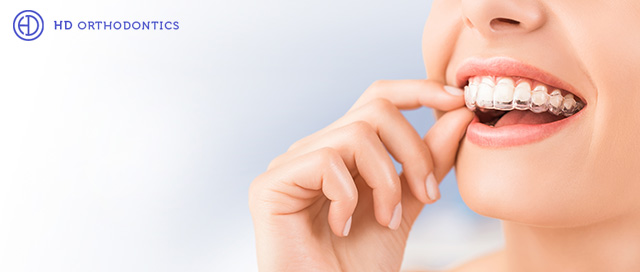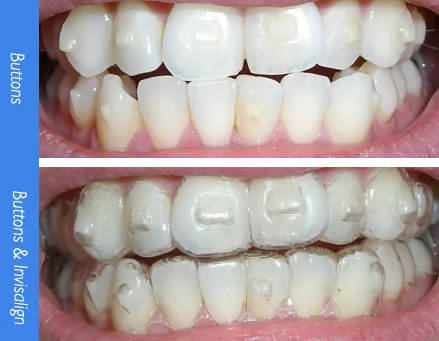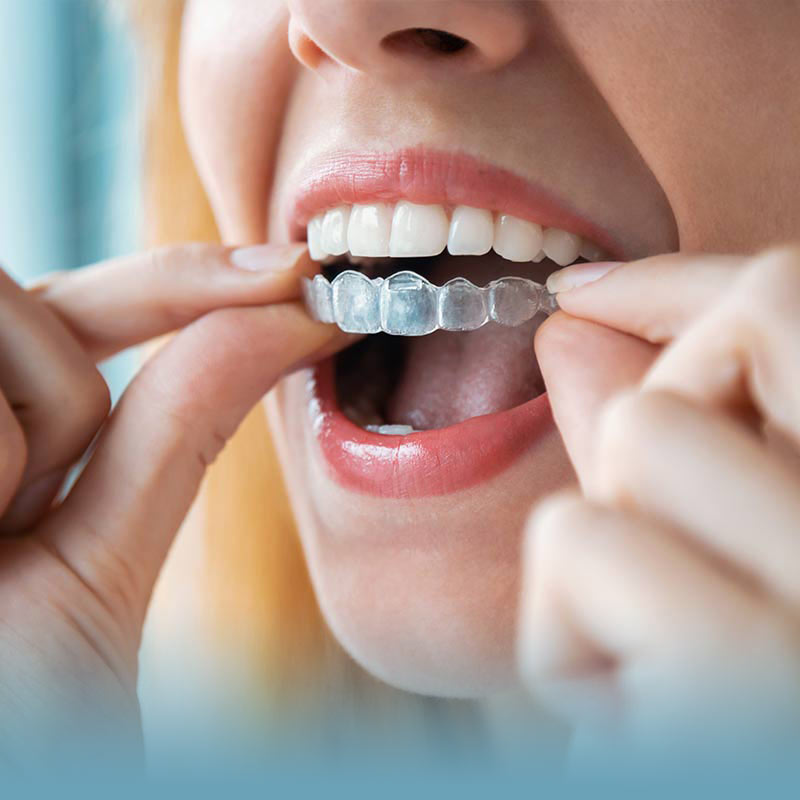Success Stories: How Invisalign Changed Lives and Improved Confidence
Success Stories: How Invisalign Changed Lives and Improved Confidence
Blog Article
Invisalign vs. Conventional Dental braces: Which Alternative Is Right for You?
When considering orthodontic therapy, the option in between Invisalign and conventional dental braces presents a number of crucial factors that merit cautious assessment. Invisalign supplies a discreet option with detachable aligners, while typical braces give a much more noticeable yet reliable remedy for extreme misalignment. Each alternative incorporates unique advantages and drawbacks connected to visual appeals, convenience, therapy period, and cost. Recognizing these subtleties is crucial for making an informed decision that lines up with your personal preferences and way of living. The question continues to be: which alternative will best meet your orthodontic requirements and expectations?
Introduction of Treatment Options

In comparison, traditional dental braces contain steel brackets and cables that are adhered to the teeth. This method applies continual stress gradually to accomplish alignment. While efficient for intricate orthodontic concerns, typical dental braces call for routine check outs for adjustments and can posture obstacles in preserving dental health as a result of the trouble of cleaning up around brackets and wires.
Both alternatives have their advantages, and the option commonly rests on specific dental problems, way of life preferences, and client conformity. Eventually, getting in touch with an orthodontic expert is important for determining the most appropriate treatment plan tailored to specific needs. Comprehending the nuances of each alternative can dramatically affect the general success of orthodontic therapy.
Aesthetic Considerations
A considerable element influencing the option in between Invisalign and conventional braces is the visual allure each treatment uses. Invisalign aligners are crafted from clear plastic, making them practically invisible when used.
On the other hand, typical dental braces include steel brackets and cords, which can be more visible. While improvements in orthodontic innovation have resulted in the advancement of smaller sized brackets and colored elastics, typical dental braces still keep a more noticeable profile. For some people, the exposure of dental braces may hinder them from seeking required therapy.
Inevitably, the choice between Invisalign and conventional dental braces may rest on personal choices regarding visual appeals. Individuals who prioritize discernment often favor Invisalign, while those that are much less worried about visibility may go with typical braces. Comprehending the aesthetic ramifications of each choice is crucial for making an informed choice that lines up with one's way of life and preferences.
Comfort and Convenience

In regards to benefit, Invisalign aligners are removable, making it possible for clients to enjoy their favorite foods without restriction and maintain optimum dental hygiene. Cleaning and flossing are simplified, as the aligners can be gotten throughout these routines, whereas standard dental braces call for careful maneuvering around cords and brackets.
In addition, Invisalign's progressive system allows for less orthodontic check outs. People normally receive several sets of aligners simultaneously, which can enhance the treatment process and minimize time spent in the orthodontist's chair. In contrast, standard dental braces require normal changes, making them less convenient for those with active schedules. Invisalign. In general, the convenience and ease of Invisalign make it an attractive option for several people seeking orthodontic treatment.
Treatment Duration and Performance
While both Invisalign and standard dental braces are effective in fixing dental misalignments, the duration of treatment can differ substantially between the two options. Generally, Invisalign therapy can take anywhere from 12 to 18 months, depending on the intricacy of the instance. The clear aligners function by gradually changing teeth into their preferred positions, and normal follow-ups with an orthodontist help ensure development stays on track.
In contrast, conventional braces frequently need a longer commitment, generally varying from 18 months to 3 years. This is because of their fixed nature and the go to the website usage of cables and brackets, which can be a lot more efficient for extreme imbalances and intricate cases (Invisalign). The therapy efficiency of conventional braces is well-documented, as they permit exact modifications and greater control over tooth activity
Ultimately, the selection between Invisalign and typical dental braces might rest on both the anticipated treatment duration and the particular oral issues available. Consulting with an orthodontist is essential, as they can provide tailored recommendations based on private requirements, ensuring the picked method aligns with preferred durations and results.
Price Comparison and Insurance Choices
Expense plays a significant role in the decision-making procedure for people considering orthodontic therapy, whether selecting Invisalign or traditional braces. Generally, the expense of Invisalign ranges from $3,000 to $8,000, while traditional dental braces normally cost in between $2,000 and $6,000. Elements influencing these expenses include the complexity of the instance, the period of therapy, and geographical place.
Insurance coverage can dramatically impact out-of-pocket expenditures. Many oral insurance coverage strategies supply partial protection for orthodontic therapies, but the specifics can differ extensively. It is essential for people to review their insurance policies to identify the level of protection for either option. Typically, conventional braces may be much more regularly covered by insurance policy plans compared to Invisalign, which some insurance firms categorize as an aesthetic procedure.
In addition, a number of orthodontic try these out techniques provide adaptable layaway plan, making both therapy alternatives a lot more easily accessible. People need to make inquiries regarding potential funding alternatives and discount rates for ahead of time repayments. Examining the total cost, consisting of insurance policy benefits and payment strategies, is necessary for making a notified choice that aligns with both visual preferences and spending plan factors to consider.

Conclusion
In summary, the choice in between Invisalign and conventional dental braces rests on numerous elements, consisting of visual choices, convenience, therapy duration, and price. Invisalign provides a very discreet, detachable alternative that assists in oral health and nutritional adaptability, while conventional dental braces may be better for intricate oral problems and typically come at a reduced link rate point. Inevitably, examination with an orthodontist is vital to examine specific scenarios and establish one of the most suitable treatment alternative for accomplishing optimum oral positioning.
When taking into consideration orthodontic treatment, the selection in between Invisalign and typical dental braces presents several vital variables that warrant careful assessment.Contrasting Invisalign and standard dental braces exposes distinctive treatment alternatives for orthodontic modification.While both Invisalign and typical braces are effective in dealing with oral imbalances, the period of treatment can differ dramatically between the 2 alternatives.Cost plays a substantial duty in the decision-making procedure for people thinking about orthodontic treatment, whether choosing for Invisalign or conventional dental braces.In summary, the selection between Invisalign and traditional braces pivots on multiple elements, including aesthetic preferences, comfort, therapy duration, and expense.
Report this page